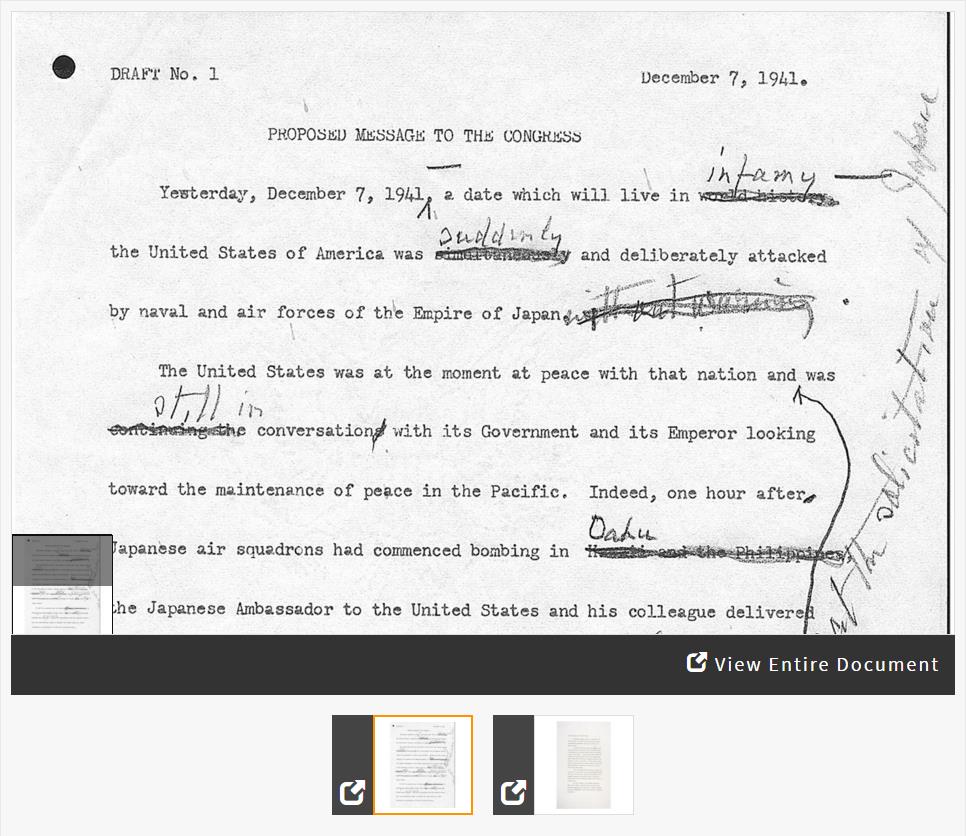Two Versions of FDR's Infamy Speech
Focusing on Details: Compare and Contrast

About this Activity
- Created by:National Archives Education Team
- Historical Era:The Great Depression and World War II (1929-1945)
- Thinking Skill:Historical Analysis & Interpretation
- Bloom's Taxonomy:Analyzing
- Grade Level:Middle School
This activity presents students with two versions of President Franklin D. Roosevelt's famous speech following the Japanese attack on Pearl Harbor: an earlier typewritten draft and the final Senate copy of the address. Students will read, analyze, and contrast these two versions to see the impact of his changes to the overall message and tone of the speech.
This activity is adapted from an article by Elsie Freeman, Wynell Burroughs Schamel and Jean West.
https://www.docsteach.org/activities/student/a-date-which-will-live-in-This activity is adapted from an article by Elsie Freeman, Wynell Burroughs Schamel and Jean West.




